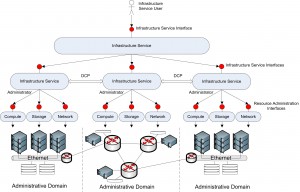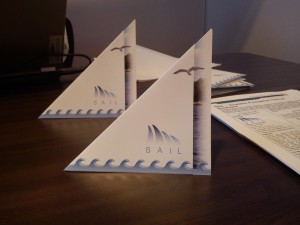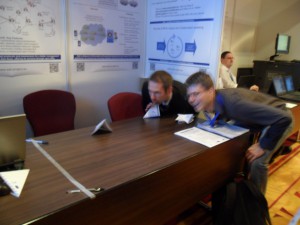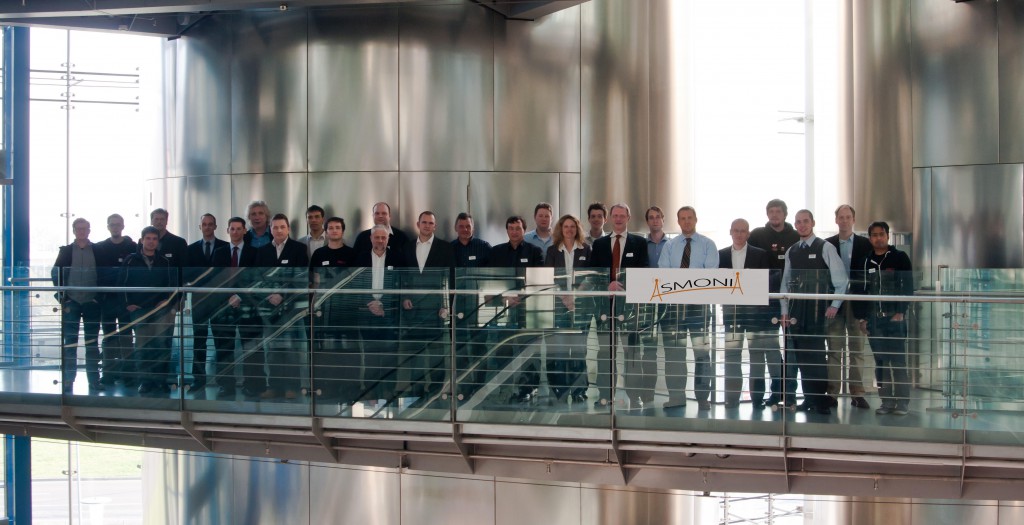By Uwe Naumann, Daniel Catrein, Heiko Perkuhn and Duong Quoc Trong
Guest post: Duong Quoc Trong, master student at RWTH Aachen University, has just completed his thesis under the supervision and guidelines of Daniel Catrein and Heiko Perkuhn, Ericsson Research in cooperation with professor Uwe Naumann, STCE chair, RWTH Aachen University . Trong is not directly involved in the SAIL project but his thesis result could be in SAILors’ interest.
Cloud Networking is one of three main technical objectives, determined by SAIL’s project, constituting the three trends that lead to the Network of the Future. “Rather than controlling network and computation facilities as separate entities, with little or no power over the underlying resources, cloud networking can optimize resource allocations by considering network and computing resources as a unified whole” (Cloud computing in telecommunications). In this post, I will discuss about a potential foundation of that optimization. This optimization foundation can be used as a tool to examine different aspects of mobile network. For example, in our study that points to a typical Western European operator, the total cost can be reduced up to 96.5% by using a secondary sites approach (with assumed site capacities and number of subscribers).
Cloud Networking Services
Before going into the optimization, let’s take a look into more detail on how cloud networking could allocate distributed computing and network resources as a unified whole. In the following I will analyses the case of a telecom operator who is often a network service provider as well. A typical mobile network today comprises geographically separate primary and secondary sites (An Analysis of Web Caching in Current Mobile Broadband Scenarios). By extending this infrastructure into cloud networking, the operator could provide very competitive cloud services. Figure 1 shows the architecture for a class of these services.
In this architecture, the telecom network consisting of primary sites and secondary sites as well as third party data centers represented by public cloud, i.e. Amazon EC2 are taken into account for deployment of application servers (which are called streaming servers for the rest of the post). Therefore, the service on one hand would exploit strengths of the operators’ mobile networks (local presence of secondary sites) to enhance end user experience through edge delivery methods. On the other hand, it can be scaled dynamically, even to public clouds, to meet the changing demand of clients without worrying about unpredictable peak loads. These two competitive advantages promise the operator a new business opportunity of cloud service offering.
Optimization
With these cloud networking services above, a paradigm shift from rather static deployment of resources to more dynamic, on-demand practices in clouds means more flexibility and better utilization of resources. This demands new ways to efficiently configure and deploy services in the telecom clouds. In another words, new solutions for planning, dimensioning and deploying resources in the network are needed.
Addressing this demand, our approach is modeling the telecom network topology as a cost-based mathematic model. The aim of this model is to provide an analytical tool that can be used to explore different aspects of the network in terms of cost-reduction. For example, it provides a benchmark that can be used to evaluate and compare the cost (resource usage) of software services for different telecom network topologies. In another example, with each topology, it helps to characterize the deployment solutions that yield the lowest resource usage over the entire network.
To do so, we will formulate a total cost function for resource usage of the service based on predefined parameters and variables as in the Figure 1 (details can be found in my thesis). This total cost includes server operation costs in data centers (internal and external) and link costs for data transferring. Then by means of minimizing the cost function, we can determine the necessary number of streaming servers, server placements and request-routing scheme such that the service can serve all the client requests sufficiently.
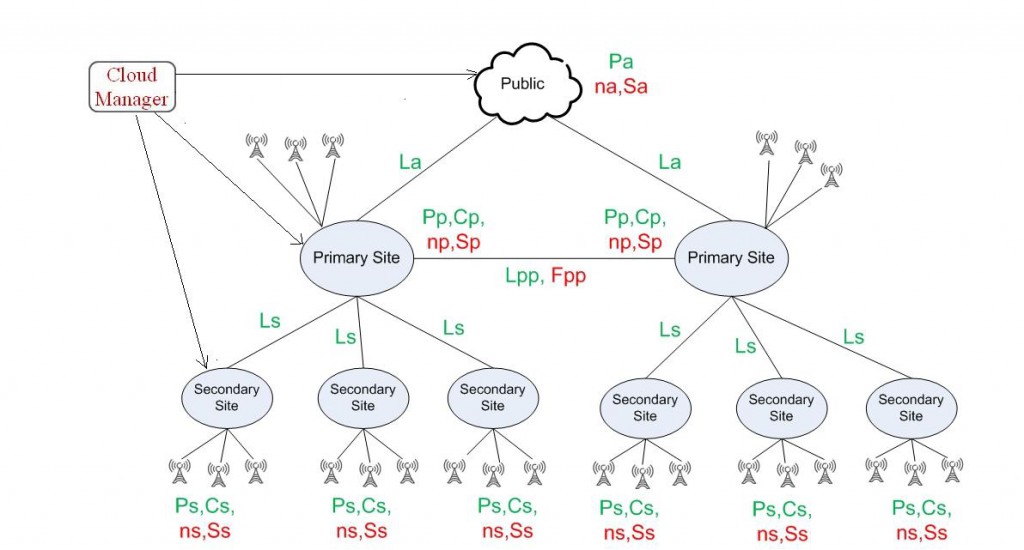
Figure 1: The basic model with all parameters and variables
The presented reference case can be formulated as a linear integer optimization problem. Note that the formulation as a proper mathematical optimization problem is key as this enables us to utilize the whole mathematical toolbox of algorithms and heuristics to solve these problems. There exist a number of software packages for solving linear programs. We chose a package including AMPL modeling language and LPSolve solver.
The solving process is presented in Figure 2. First, the mathematic model is converted to an AMPL model using the AMPL modeling language. After that, the AMPL data file is created to provide input data for all the parameters in the AMPL model. Then the LPSolver, an optimization solver, is selected and downloaded. Finally, the AMPL script will call the AMPL model, AMPL data file and solver together to print out the optimal total cost with the respective values of variables.
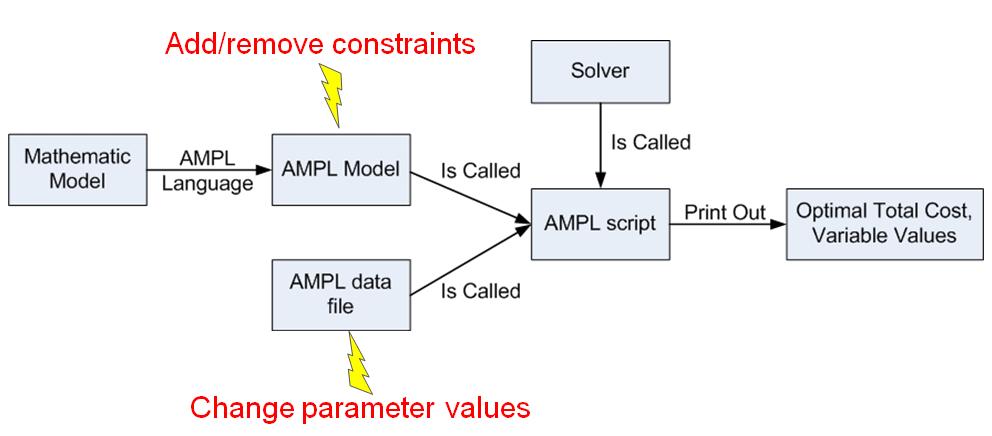
Figure 2: Optimization Process
Applying this optimization process, different network topologies and deployment strategies can be considered and evaluated by changing the values of parameters or adding/removing constraints accordingly.
Prototype
For verification purposes, a prototype was built showing especially the fast and easy deployment of media streaming servers in third party data centers. The prototype is a complete system that provides a live streaming service to the end-user (details can be found in my thesis). To demonstrate the dynamically scaling characteristic of the system based on the demand, streaming servers are deployed dynamically onto the private cloud Eucalyptus or the public cloud Amazon EC2. The more requests come, the more streaming servers are deployed. To deploy a server, it takes only 3 minutes. Additionally, assuming the number of requests goes down, we terminated some streaming servers. To terminate a server, it takes only 1 minute.
Evaluation and Conclusion
We used our model to analyze several aspects of a mobile network. As a reference application we used a video streaming service, because these kinds of services are responsible for the majority of data traffic in today’s (and future) mobile networks.
First, we compared two different network topologies. These network topologies are based on a typical mobile network of a Western European operator. We also used a typical user distribution with realistic total number of subscribers as well. Our model showed that a topology with full-meshed primary sites has a slight cost advantage (~ 1%) over a topology with no inter-primary-site links. This ratio is calculated with primary site and secondary’s capacities < 1000 servers. It increased to, i.e. ~21.41% if we change site capacities to several thousand servers. Taking the full-meshed topology, we analyzed deployment of media servers in primary and secondary sites vs. deployment in primary sites only. The result suggests that using secondary sites is more cost efficient (~3.4%). The ratio is ~96.5% if the primary site capacity is increased approximately tenfold. Finally we analyzed a quite fine-grained optimization that takes advantage of virtualization technology, showing a cost reduction of up to 0.5% depending on number and distribution of clients.
All these results depend of course on the input parameters, such as cost for internal links. Each network provider will have its own numbers and so the results will look slightly different.
In short, our approach of modeling the mobile network and its cloud related properties mathematically proved to be a quick and efficient way to analyze relevant aspects of mobile network configurations from a cost-perspective. This result is to be seen as a foundation and framework for future research in this area. Since the actual calculation time is negligible, this approach could e.g. be used for real time monitoring and managing the “Telco Cloud”, in order to exploit its dynamic properties in an optimal way. The feasibility of dynamic server deployments for a multimedia application in a cloud environment was demonstrated in the lab at Ericsson Eurolab.
*If you are interested in the full version of my thesis “Optimization and Evaluation of a Multimedia Streaming Service on a Hybrid Telco Cloud”, please send us an email. We would be very happy to send it to you.
Disclosure and disclaimer: I did my thesis at Ericsson, as part of my education between RWTH Aachen University, Germany and Thai German Graduate School (TGGS), Thailand. However the opinions expressed in this post are my personal, and not those of my employer.

